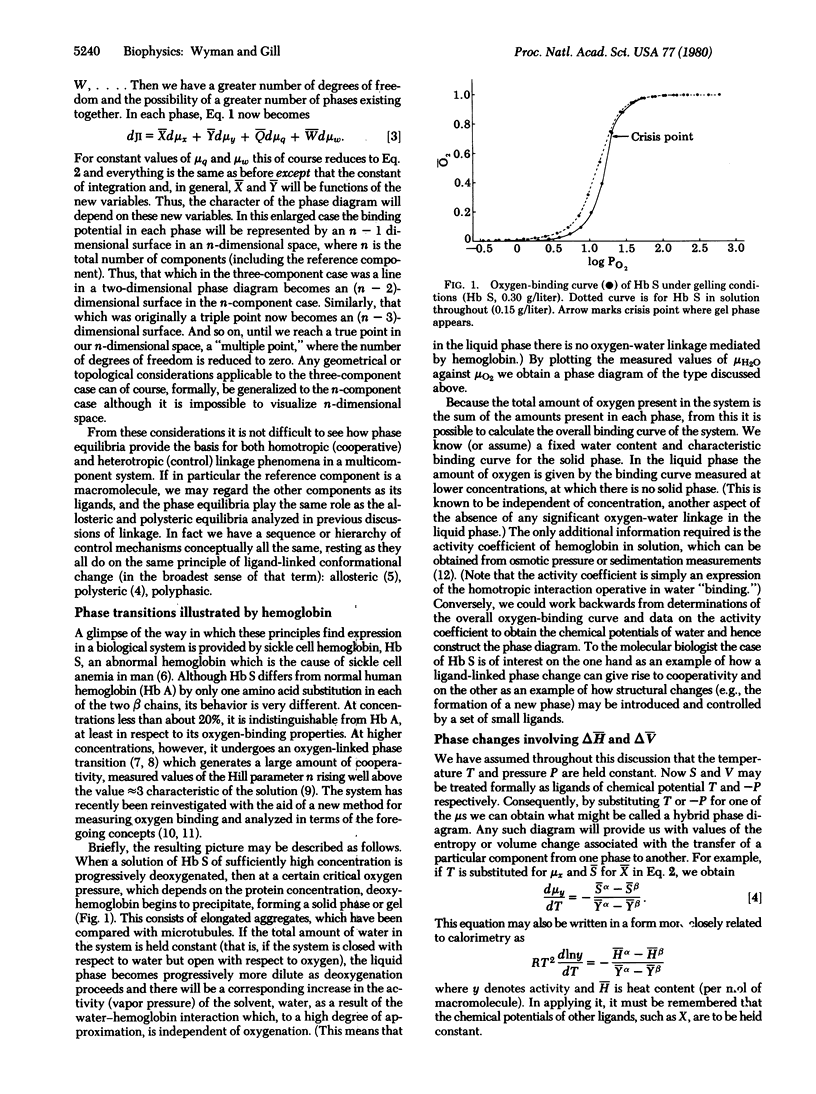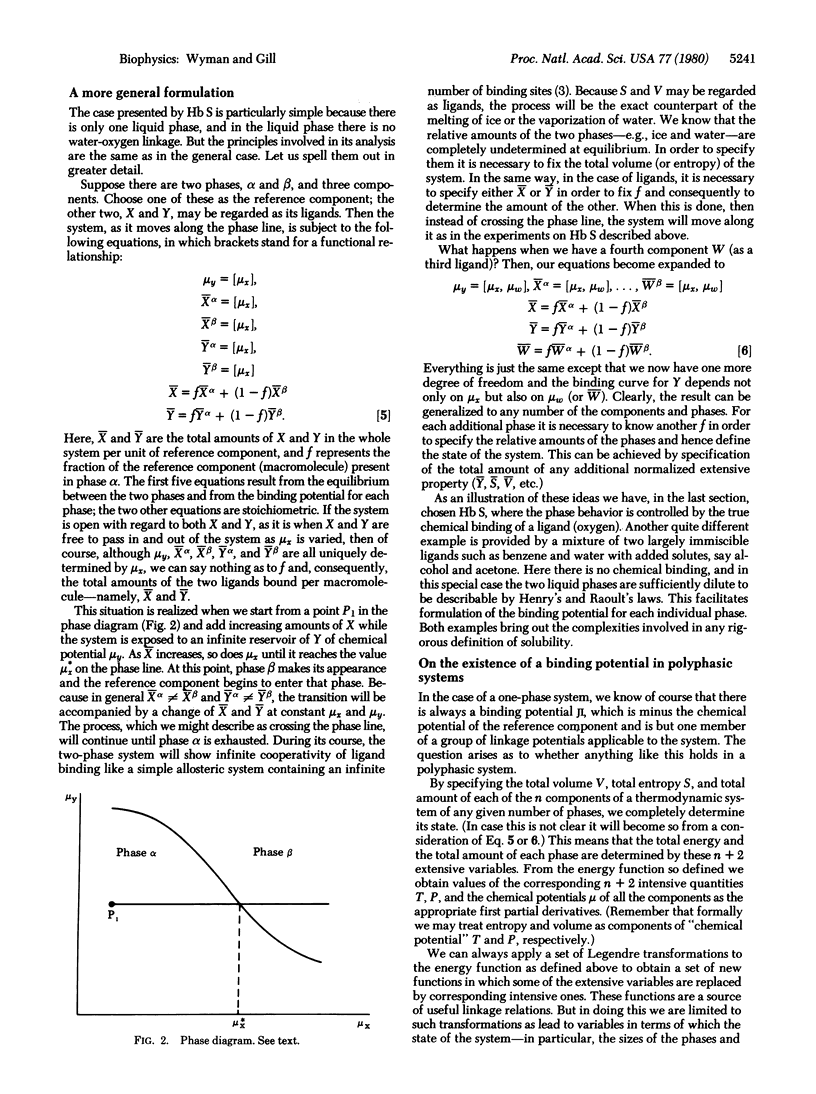Abstract
Polyphasic linkage is a close analog of the allosteric and polysteric linkages shown by many biological macromolecules. Like them, it gives rise to both homotropic and heterotropic effects. It is governed by a group of linkage potentials applicable to each separate phase and also, subject to certain conditions, by a group of lower order applicable to the whole system, globally. A good example of polyphasic linkage is provided by sickle cell hemoglobin which, under suitable conditions and subject to control by oxygen, precipitates out of solution to form what appear to be microtubules. This is but one instance of the way in which macromolecular assembly and the formation of subcellular structures generally can be regulated by various small molecules acting as ligands.
Full text
PDF



Selected References
These references are in PubMed. This may not be the complete list of references from this article.
- Colosimo A., Brunori M., Wyman J. Concerted changes in an allosteric macromolecule. Biophys Chem. 1974 Dec;2(4):338–344. doi: 10.1016/0301-4622(74)80060-8. [DOI] [PubMed] [Google Scholar]
- Colosimo A., Brunori M., Wyman J. Polysteric linkage. J Mol Biol. 1976 Jan 5;100(1):47–57. doi: 10.1016/s0022-2836(76)80033-2. [DOI] [PubMed] [Google Scholar]
- Gill S. J., Benedict R. C., Fall L., Spokane R., Wyman J. Oxygen binding to sickle cell hemoglobin. J Mol Biol. 1979 May 15;130(2):175–189. doi: 10.1016/0022-2836(79)90425-x. [DOI] [PubMed] [Google Scholar]
- Gill S. J., Skold R., Fall L., Shaeffer T., Spokane P., Wyman J. Aggregation effects on oxygen binding of sickle cell hemoglobin. Science. 1978 Jul 28;201(4353):362–364. doi: 10.1126/science.663663. [DOI] [PubMed] [Google Scholar]
- Gill S. J., Spokane R., Benedict R. C., Fall L., Wymann J. Ligand-linked phase equilibria of sickle cell hemoglobin. J Mol Biol. 1980 Jun 25;140(2):299–312. doi: 10.1016/0022-2836(80)90107-2. [DOI] [PubMed] [Google Scholar]
- Hofrichter J., Ross P. D., Eaton W. A. Supersaturation in sickle cell hemoglobin solutions. Proc Natl Acad Sci U S A. 1976 Sep;73(9):3035–3039. doi: 10.1073/pnas.73.9.3035. [DOI] [PMC free article] [PubMed] [Google Scholar]
- MONOD J., WYMAN J., CHANGEUX J. P. ON THE NATURE OF ALLOSTERIC TRANSITIONS: A PLAUSIBLE MODEL. J Mol Biol. 1965 May;12:88–118. doi: 10.1016/s0022-2836(65)80285-6. [DOI] [PubMed] [Google Scholar]
- May A., Huehns E. R. The mechanism and prevention of sickling. Br Med Bull. 1976 Sep;32(3):223–233. doi: 10.1093/oxfordjournals.bmb.a071367. [DOI] [PubMed] [Google Scholar]
- Minton A. P. Relations between oxygen saturation and aggregation of sickle-cell hemoglobin. J Mol Biol. 1976 Feb 5;100(4):519–542. doi: 10.1016/s0022-2836(76)80043-5. [DOI] [PubMed] [Google Scholar]
- Ross P. D., Minton A. P. Analysis of non-ideal behavior in concentrated hemoglobin solutions. J Mol Biol. 1977 May 25;112(3):437–452. doi: 10.1016/s0022-2836(77)80191-5. [DOI] [PubMed] [Google Scholar]
- WYMAN J. THE BINDING POTENTIAL, A NEGLECTED LINKAGE CONCEPT. J Mol Biol. 1965 Mar;11:631–644. doi: 10.1016/s0022-2836(65)80017-1. [DOI] [PubMed] [Google Scholar]
- Wyman J. A group of thermodynamic potentials applicable to ligand binding by a polyfunctional macromolecule. Proc Natl Acad Sci U S A. 1975 Apr;72(4):1464–1468. doi: 10.1073/pnas.72.4.1464. [DOI] [PMC free article] [PubMed] [Google Scholar]


